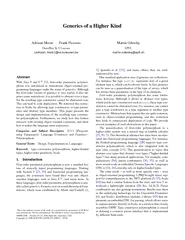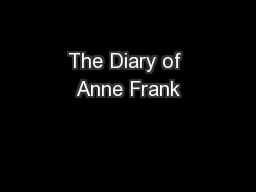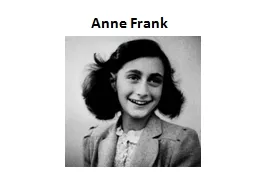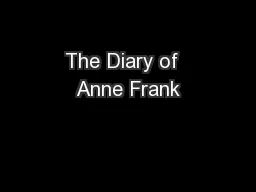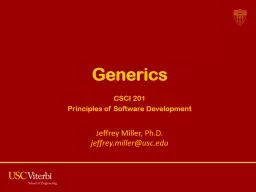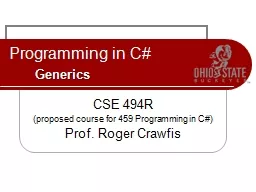PDF-Generics of a Higher Kind Adriaan Moors Frank Piessens
Author : pamella-moone | Published Date : 2015-04-09
ULeuven adriaan frank cskuleuvenbe Martin Odersky EPFL martinoderskyep64258ch Abstract With Java 5 and C 20 64257rstorder parametric polymor phism was introduced
Presentation Embed Code
Download Presentation
Download Presentation The PPT/PDF document "Generics of a Higher Kind Adriaan Moors ..." is the property of its rightful owner. Permission is granted to download and print the materials on this website for personal, non-commercial use only, and to display it on your personal computer provided you do not modify the materials and that you retain all copyright notices contained in the materials. By downloading content from our website, you accept the terms of this agreement.
Generics of a Higher Kind Adriaan Moors Frank Piessens: Transcript
Download Rules Of Document
"Generics of a Higher Kind Adriaan Moors Frank Piessens"The content belongs to its owner. You may download and print it for personal use, without modification, and keep all copyright notices. By downloading, you agree to these terms.
Related Documents

